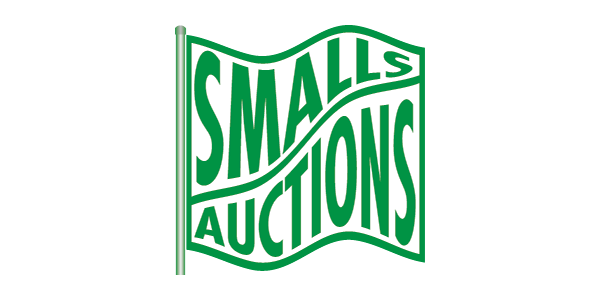Auction 88 Highlights
Welcome to Smalls Auctions Sale 88.
In this sale we have a good selection of affordable Australian Pre-decimal or Imperial copper halfpennies and pennies that circulated in Australia prior to 1966. For the younger generations and our international customers, it is probably worth explaining the transitioning of our currency from British Imperial coinage to the Decimal coinage that Australia uses today.
When Australia was first established as a British Penal Colony in 1788, the ‘First Fleet’ of convicts and their military overseers brought with them a rudimentary coinage of worn silver coins from England to circulate as local currency.
Currency in the fledgling colony was always in short supply and in 1800 the Governor of New South Wales in desperation introduced a table of currency that afforded international coins a greater value if they circulated in the Colony. These are now called ‘Proclamation Coins’ and as an example, the British Penny (Lot 1) featured in our sale was worth double, or Twopence, in the Australian economy. Governor King’s Proclamation was meant to capture the currency within the Colony, but wily traders just put up their prices to compensate for ‘inflation’ and sailed away with their cache of coins.
In 1813 Governor Macquarie tried a different tactic and punched the centre out of Spanish 8 Reale coins creating the outer ring known as the Holey Dollar and the centre plug, or Dump, valued at Fifteen Pence. Lots 2 & 3 in our sale are examples of this coinage. The Holey Dollars and Dumps were used in conjunction with British coins but again they proved only a modest success and were taken from circulation by 1829.
In 1900, the five mainland colonies of Australia and the island Colony of Tasmania came together to form the Commonwealth of Australia. As an aside the British Colony of New Zealand was also invited to join but, in the end, decided to go its own way.
The Royal Mint established three branch mints in Australia, Sydney (1855), Melbourne (1872) and Perth (1900) all striking Imperial gold coins from local ore that were distinguished by individual mint marks. These circulated in the Empire on parity with their British equivalents. Australian silver and copper coins for general circulation were first introduced in 1910-11 and gradually replaced British coins that were still being used in Australia in significant numbers well into the 1920s.
On the 14th February 1966 Australia introduced Decimal Currency breaking at last from the Imperial Currency of pounds, shillings, and pence that it had inherited from Great Britain.
Before the introduction of Decimal Currency, the Melbourne Mint had assumed the role as the senior mint in Australia and so was entitled to receive from the Royal London Mint ‘proof record’ coins for its collection. It sold off duplicates over the last few decades to fund other acquisitions and Lot 72 the Peru. 1935 Proof 10 Centavos, NGC PF65 and Lot 87 the Yugoslavia. 1931 (L) 10 Dinara, NGC PF65 are examples of these coins which were struck exclusively for the collections of the Royal Mint and its branches and so have estimated mintages of perhaps 10 pieces. They are true numismatic rarities.
There are also a few superb coins from the Jerome Remick collection, which was dispersed by Spinks, London in November 2005 as well as some quality world banknotes.
We hope you find something of interest.
Smalls Auctions.

Australia (New South Wales). 1813 'D2' Dump, about Fine/Fair
Find out more
Cyprus. 'Specimen - Colour Trial' £5 (1955)', virtually Uncirculated OPQ
Find out more
Australia (New South Wales). 1813 'A1' Dump, good Very Fine
Find out more

